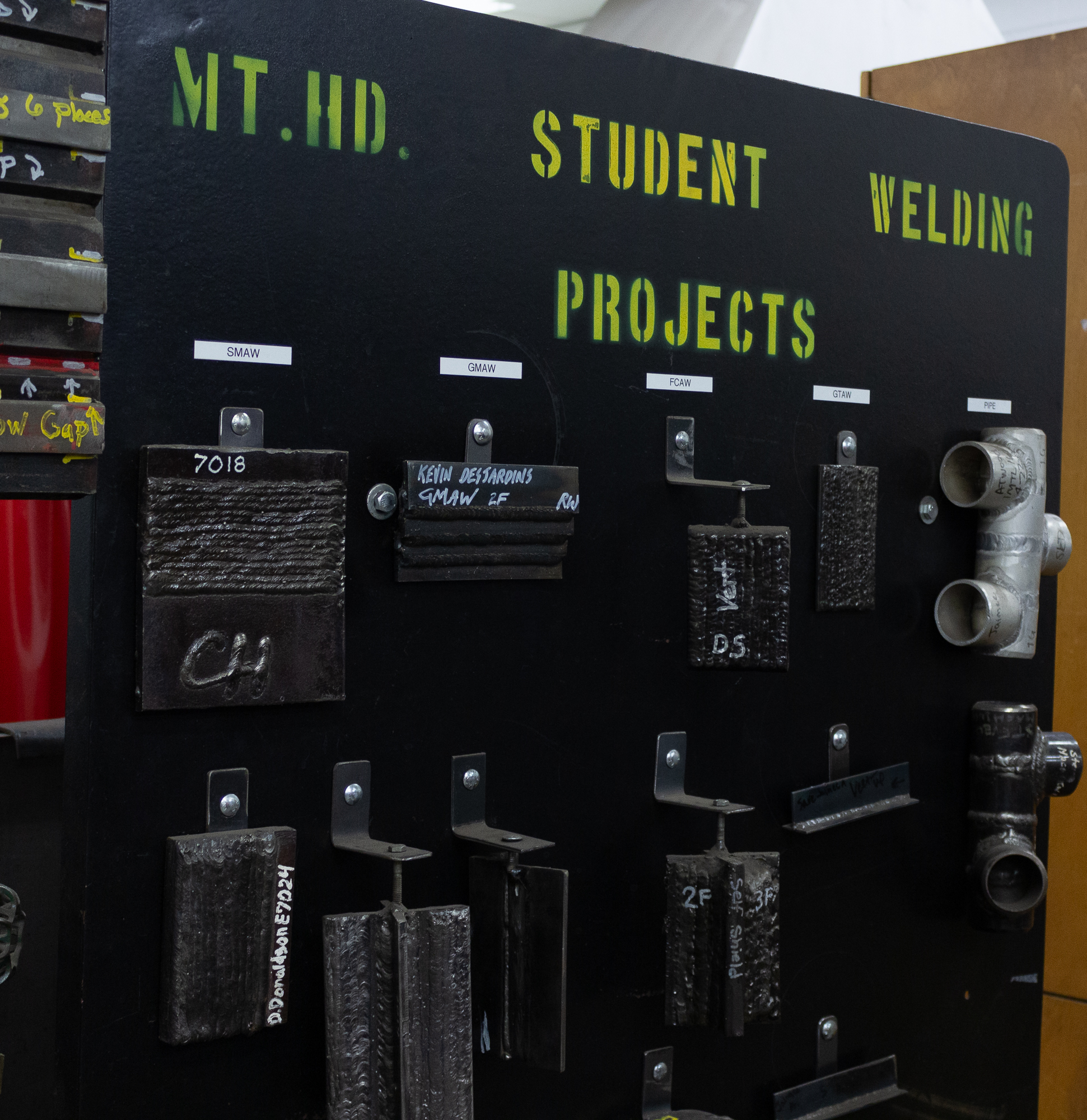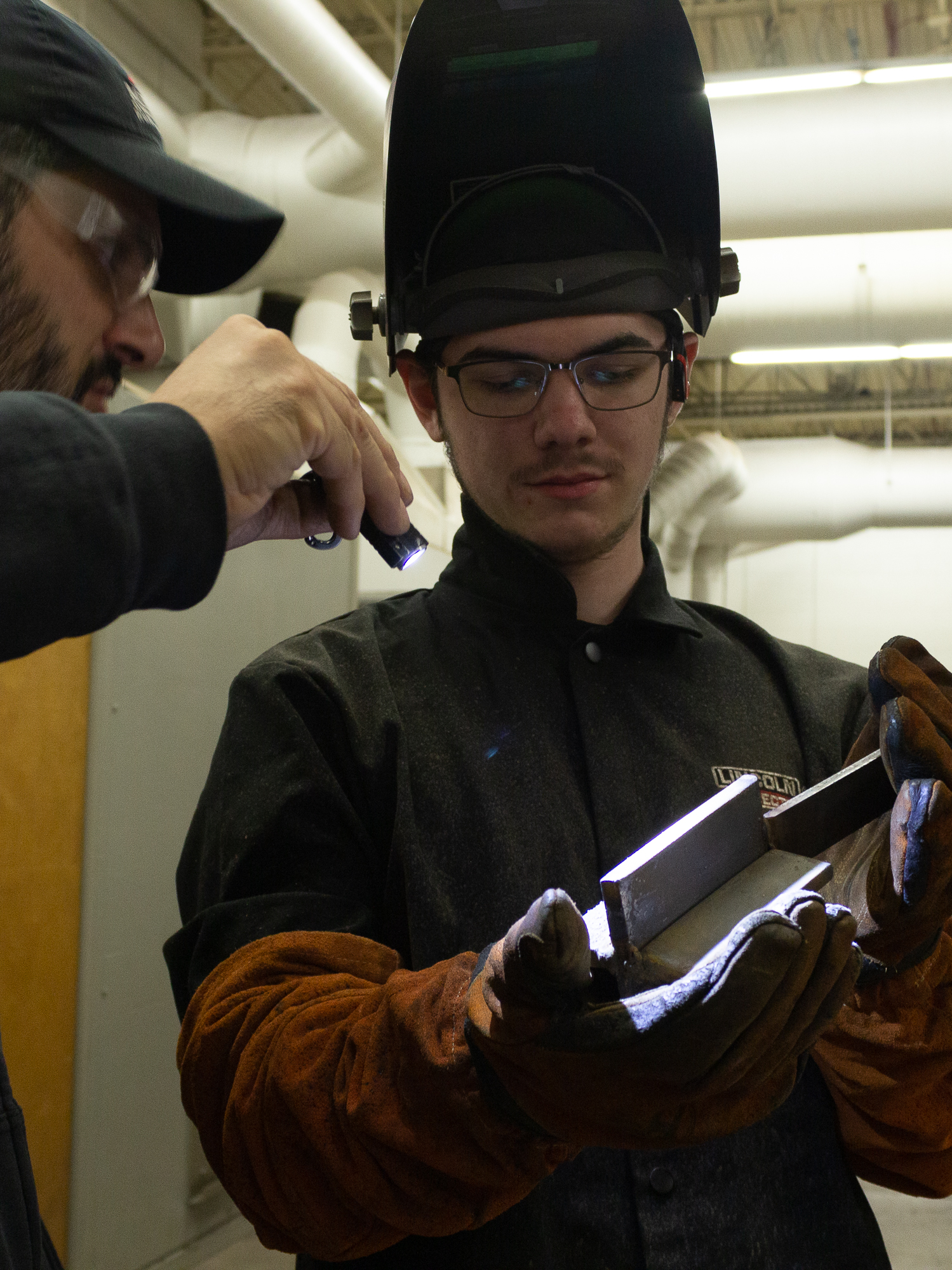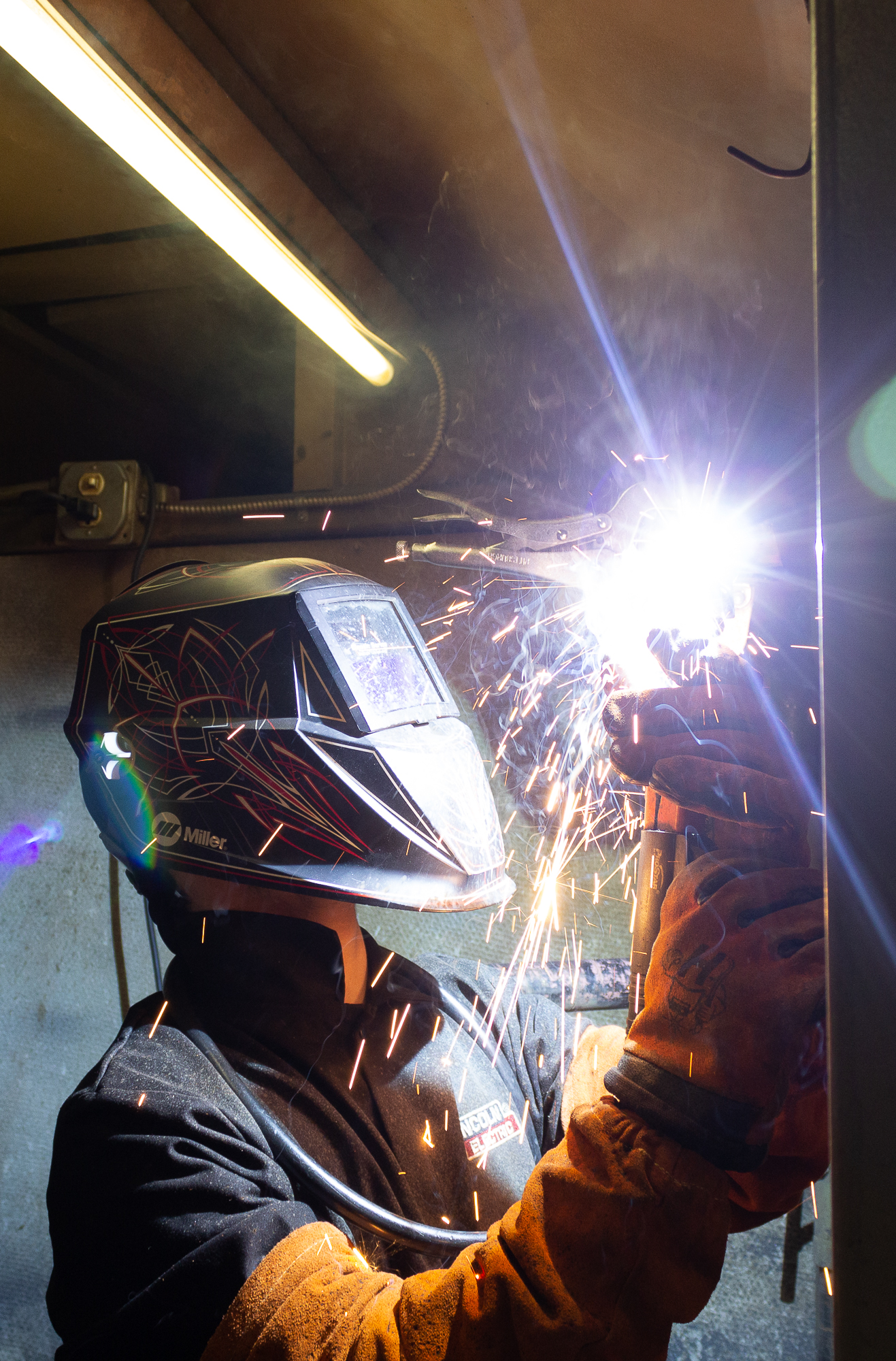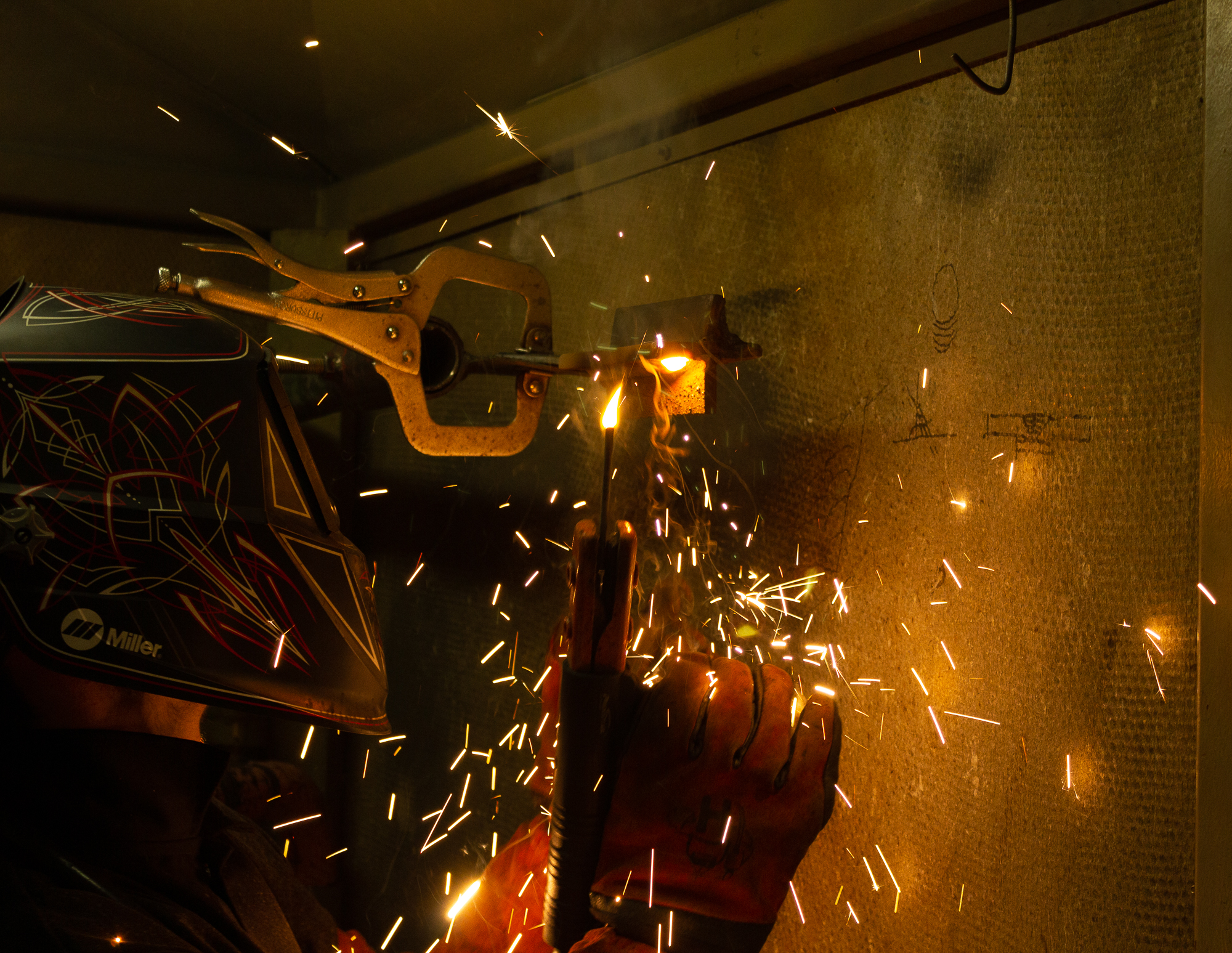MHCC welding program helps students connect with 150,000 jobs




I really enjoy writing about people and their art or their creativity… everyday people and their everyday positive accomplishments. But what I really like to write about is people, places, and things that make this world a better place.
Whenever I interview an MHCC staff member, an instructor, or a coach, my biggest questions always rotate around “What is it you do to help the students compete in the job or career market, or at higher level in sports, or getting into a higher, four-year learning institution?
“What are some of the things you do to help the student compete in this world?”
I always ask hard questions with the student’s future in mind. So, it’s great to get some great answers here at Mt. Hood. And it seems clear to me that Welding Technology is a great campus program that helps connect students to employers and a promising career.
The American Welding Society (AWS) estimates that about 150,000 (pre-pandemic) welders are retiring within the next one-to-five years. It’s been predicted there’s going to be a big vacuum, as soon as next year.
Welding instructor Valorie Gilbert brings a wealth of knowledge and years of connections with large and small welding companies to Mt. Hood. She also helps students obtain a welding certificate PSI Test that would normally cost them a pretty penny to do on their own.
Gilbert has taught the last nine years at MHCC and has been responsible for many of her students going on to careers in welding and/or metallurgy. The campus programs go on for three terms and at the end of every class ending in spring, she invites welding companies to look at her students’ work. She facilitates their interviews with such local companies as Gunderson (railcar fabricator) and Cascade Corp. (lift truck attachments).
Gilbert noted that certification is not the end-all, because companies will often train new employees. She explained that the field has many options, such as factory work and production lines, as well as “mom-and-pop” shops.
“Welding is a good career (choice) that has a lot of work. Even if you decide to not weld after completing the course, it’s something you can fall back on,” she said. She adds that she works hard to give each student every opportunity to succeed.
Students in the program learn four different welds, including stick – the most common type of arc weld, using electrical current – MIG (for metal inert gas), TIG (tungsten inert gas), and flux-core. They move on to advanced metallurgy and plasma welds/cuts, which are computer-assisted.
“Welding is what we call in the business ‘time under the hood.’ In this course we build confidence and/or skill,” said Gilbert, emphasizing that welding is “for everyone.” Having overcome dyslexia herself, she expressed confidence Mt. Hood’s program has room for just about any type of student.
Indeed, the Saints’ program is a melting pot of students of different backgrounds, ethnicities, genders and ages with different skill levels.
Gilbert estimates that three or four out of her class of 25 students started welding in high school; a small portion welded at home or in their back yard; but at least half entered the program with no experience at all.
For a quick sample, take Michael Ray Bixel, well-liked by his classmates and a veteran with a combat tour served in Iraq. He was diagnosed with severe PTSD while serving in Operation Iraqi Freedom but was awarded multiple medals while stationed at Al Asad with the Oregon National Guard out of Hillsboro.
Bixel is currently enrolled in Welding Technology but plans on a degree in integrated metals, using his GI Bill. Asked why he chose welding Technology as a major at Mt. Hood, he said, “It’s fun and it keeps me busy. I can be around people again” and it “bring(s) me back to the world again. There’s a lot of work in this field.”
Then there’s Tyler Whaley, 17 years old and a senior in high school, earning early college credits while pursuing his welding certication and his Eagle Scout award with the Scouts. He plans to work as a welder “until I can get into an electrician apprenticeship program,” he said.
“That’s what I really want to do. I see welding as a stepping-stone.”
Whatever the goal, it’s personal motivation that is the key to success in her program, Gilbert said.
“A lot of students struggle with the basics in the beginning, but if the student is willing I will make time for them and most succeed,” she said. “It’s the repetition of doing the same thing over and over (making weld beads) to the point where most students get it over time… The only way to not being able to weld at the end of this class is if an individual never enters the shop, or never tries.”

Leave a comment